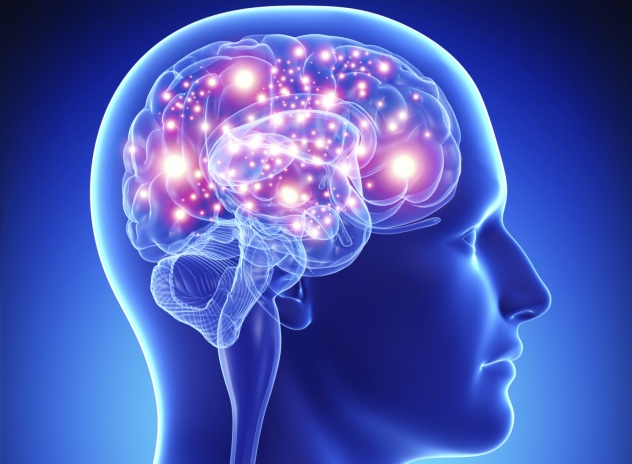In the article, we consider the history of psychiatry, its main directions, tasks.
The clinical discipline that studies etiology, prevalence, diagnosis, pathogenesis, treatment, examination, prognosis, prevention and rehabilitation of behavioral and mental disorders is psychiatry.
Subject and Tasks
The subject of study is the mental health of people.
The tasks of psychiatry are as follows:
- diagnosis of mental disorders;
- study of the course, etiopathogenesis, clinic and outcome of mental illness;
- analysis of the epidemiology of mental disorders;
- study of the effect of drugs on the pathomorphism of mental disorders;
- development of methods for the treatment of mental disorders;
- development of rehabilitation methods for patients with mental illness;
- development of preventive methods for the development of mental illness in humans;
- organization of assistance to the population in the psychiatric sphere.
The history of the development of psychiatry as a science will be briefly described below.
History of science
According to Yu. Cannabih, the following stages are distinguished in the development of psychiatry:
- The pre-scientific period - from ancient times until the advent of ancient medicine. The observations fixed in mythology in a figurative form accumulate haphazardly. People endowed the soul with the surrounding phenomena and objects, which is called animism. Sleep and death were identified by primitive man. He believed that the soul in a dream leaves the body, sees various events, takes part in them, wanders around, and all this is reflected in dreams. If a person’s soul was absent and never returned, then the person died.
- Ancient Greco-Roman medicine (7th century BC - 3th century AD). Mental illnesses are regarded as natural phenomena that require appropriate action. The religious-magical understanding of pathologies is replaced by a metaphysical and, to some extent, scientific-realistic. Somatocentrism is becoming predominant. On its basis, Hippocrates considered hysteria the result of pathologies of the uterus, melancholy (depression) - biliary stagnation.
- The Middle Ages - the decline of human thought, scholasticism and mysticism. Practical medicine is returning to the mystical-religious and animistic approaches. At that time, demonic notions of mental illness prevailed.

- Renaissance - scientific thought is in its prime, and with it the history of psychiatry is developing.
- The second half of the 9th century - 1890 year. At this time, the clinical direction of psychiatry is developing rapidly. Systematization of all clinical observations is carried out, symptomatic psychiatry is developing, symptom complexes are described.
- The end of the XIX century (last ten years) is the nosological stage of the development of science. Currently, the history of psychiatry has stopped its movement at this stage.
The boundaries of a number of nosological psychiatric forms are constantly being revised as knowledge accumulates, to date, while most of the diseases are not classified according to the etiological characteristics.
Below we consider the main areas of psychiatry.
Nosological direction
Its founder is Kraepellin, who believed that any single disease - a nosological unit - must fit the following criteria: the same symptoms, one reason, outcome, course, anatomical changes. His followers, Korsakov and Kandinsky, sought to make a descriptive classification of psychoses, and Bayle was highlighted with progressive paralysis. The descriptive method is leading.
Syndromological and eclectic directions
In the syndromological direction, mental illnesses are classified based on psychopathological syndromes (depression, delirium).
The eclectic (atheoretic, pragmatic) direction was especially widespread at the end of the 20th century. Its theoretical basis is constructed in such a way as to reflect the judgments of representatives of various directions and numerous schools of psychiatry. The disorder is distinguished according to the nosological principle, if its cause is known, for example, alcoholism, drug addiction, senile dementia. If the reason is not clear, and the characteristic organic transformations in the central nervous system are not established, then they turn to the syndromological or psychoanalytic direction.
Psychoanalytic direction
The psychoanalytic direction is associated with the name of Z. Freud, who put forward the concept of a psychodynamic approach to the study of human behavior, which is based on the position that psychological unconscious conflicts (mainly of a sexual nature) control behavior. The scientist believed that the development of personality coincides with child psychosexual development. He proposed a psychoanalytic method for the treatment of neurotic disorders. Followers - A. Freud, M. Klein, E. Erickson, Jung, Adler, etc.
Antipsychiatric direction
Its founder is R. Laing. This movement is responsible for the elimination of psychiatric institutions as a way of social coercion of people who think differently. The main theses are as follows: society itself is insane, suppresses the desire to go beyond the ordinary ways of perception and thinking. Lyng's interpretation of psychopathology was carried out in the context of a change in human life. He believed that schizophrenia is a special strategy, the individual resorts to it to adapt to an unfavorable situation in life. Other representatives of the direction: F. Bazallo, D. Cooper.
Psychiatric Care Act
The current psychiatry law is aimed at creating guarantees to protect the interests and rights of persons who suffer from mental disorders. This category of citizens is the most vulnerable and needs special attention to their needs from the state.
On July 2, 1992, Federal Law No. 3185-1 on Psychiatric Care and Guarantees of the Rights of Citizens when Provided, entered into force. This bill approves a list of economic and organizational standards that control the provision of psychiatric care to people whose mental state needs medical attention.
Law content
The law contains six sections and fifty articles. They describe:
- general provisions on the rights of patients, on examination of the state of mind by the court, rules of care, etc.
- government support and mental health care;
- doctors and medical institutions that treat patients, their responsibilities and rights;
- types of assistance in psychiatry and the procedure for their implementation;
- challenging the various actions of the medical staff and medical facilities that provide such support;
- control by the prosecutor's office and the state over this procedure.
World famous psychiatrists
- Sigmund Freud - was the first to explain human behavior in terms of psychology. The scientist's findings created the first large-scale theory of personality in science, which was based not on speculative conclusions, but on observation.
- Karl Jung - his analytical psychology has gained more followers among religious figures and philosophers than among medical psychiatrists. The teleological approach operates on the fact that a person should not be connected by his own past.
- Erich Fromm is a philosopher, sociologist, psychoanalyst, social psychologist, one of the founders of Freudomarksism and neo-Freudianism. His humanistic psychoanalysis is a treatment aimed at revealing a human personality.
- Abraham Maslow is a famous American psychologist who founded humanistic psychology. He was one of the first who began to explore the positive aspects of human behavior.
- V. M. Bekhterev - a famous psychiatrist, psychologist, neurologist, founder of a scientific school. He created fundamental works on pathology, physiology and anatomy of the nervous system, work on early child behavior, sex education and social psychology. He studied personality, based on a comprehensive analysis of the brain by psychological, anatomical and physiological methods. He also founded reflexology.
- I. P. Pavlov - is one of the most respected Russian scientists, psychologist, physiologist, creator of ideas about the processes of digestive regulation and the science of higher nervous activity; founder of the largest physiological school in Russia, winner of the 1904 Nobel Prize in physiology and medicine.
- I.M.Sechenov is a Russian physiologist who created the first physiological school in Russia, the founder of a new psychology and the doctrine of mental regulation of behavior.

Books
Listed below are some popular books on psychiatry and psychology.
- I. Yalom "Existential Psychotherapy." The book is dedicated to the special existential given, their place in psychotherapy and human life.
- K. Naranjo "Character and neurosis." Nine types of personality are described, and the most subtle aspects of internal dynamics are revealed.
- S. Grof "Beyond the Brain." The author gives a description of the expanded psychic cartography, which includes not only the biographical level of Z. Freud, but also the perinatal (perinatal) and transpersonal levels.
What other psychiatric books are known?
- N. Mc-Williams, Psychoanalytic Diagnostics. In addition to a detailed description, the book includes specific recommendations for working with clients, including for complex cases.
- K. G. Jung "Memories, Dreams, Thoughts." An autobiography, but it’s unusual. Focused on the events of inner life and the stages of cognition of his unconscious.
We examined the history of psychiatry, its main directions, famous scientists and useful literature on the topic.